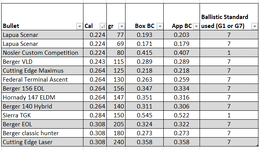ResearchinStuff
WKR
Are people trimming cases when they get longer, or are y’all ditching the brass before that happens?
if you need to trim you need to trim, excessive case lenght is a safety issue. I've had situations where cases needed trimmed basically every firing, and others where trimming was not necessary at all.
knowing if you need to trim can be a bit tricky. Sinclair makes a gauge that tell you how long the neck can get before you need to trim. Or, you can play it safe and keep things in between the max and trim to lengths, which costs nothing but time.

